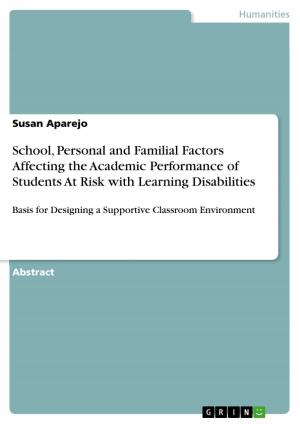The Balance between Indigenous Land Claims and Individual Private Property Rights in Latin America
A Challenge for the Human Rights Jurisdiction of the Inter-American Court of Human Rights
| Author: | Janine Schildt | ISBN: | 9783640727483 |
| Publisher: | GRIN Verlag | Publication: | October 19, 2010 |
| Imprint: | GRIN Verlag | Language: | English |
| Author: | Janine Schildt |
| ISBN: | 9783640727483 |
| Publisher: | GRIN Verlag |
| Publication: | October 19, 2010 |
| Imprint: | GRIN Verlag |
| Language: | English |
Seminar paper from the year 2009 in the subject Politics - International Politics - Topic: Public International Law and Human Rights, grade: 1,7, , language: English, abstract: How can indigenous property rights be guaranteed in today's societies? In many countries with a large indigenous population this is an ongoing political struggle at the center of which stands the question how to balance traditional indigenous land rights and modern private property rights. The UN Declaration on the Rights of Indigenous Peoples was initially not signed by Canada, USA, New Zealand and Australia. The countries argued inter alia that the article on indigenous land rights could not be brought in accord with their domestic legislation and the private property rights they have to protect. In international law no common standard for indigenous land rights exists and individual countries have found different approaches in their domestic legislations often subordinating indigenous rights or restricting them on various grounds. Frequently, indigenous collective claims are weakened because legislation only recognizes individual rights to property as legitimate. The Inter-American Court of Human Rights (IACtHR) has evolved a firm protector of indigenous land rights. In its landmark decisions Mayagna (Sumo) Awas Tingni Community vs. Nicaragua (2001), Moiwana Community vs. Suriname (2005), Yakye Axa vs. Paraguay (2005), Sawhoyamaxa vs. Paraguay (2006) and Pueblo Saramaka vs. Suriname (2007) it has underlined that traditional collective land rights fall under the protection of property in the American Convention on Human Rights (ACHR) and are thus equivalent to individual private property rights. This paper will look at the role of the IACtHR in the protection of indigenous land rights in Latin America and will discuss how it confronts the balancing problem between the two forms of property rights. Thereby, it is argued that especially because the challenge stays unresolved in many Latin American countries, the implementation of the progressive decisions of the IACtHR is frequently delayed.
Seminar paper from the year 2009 in the subject Politics - International Politics - Topic: Public International Law and Human Rights, grade: 1,7, , language: English, abstract: How can indigenous property rights be guaranteed in today's societies? In many countries with a large indigenous population this is an ongoing political struggle at the center of which stands the question how to balance traditional indigenous land rights and modern private property rights. The UN Declaration on the Rights of Indigenous Peoples was initially not signed by Canada, USA, New Zealand and Australia. The countries argued inter alia that the article on indigenous land rights could not be brought in accord with their domestic legislation and the private property rights they have to protect. In international law no common standard for indigenous land rights exists and individual countries have found different approaches in their domestic legislations often subordinating indigenous rights or restricting them on various grounds. Frequently, indigenous collective claims are weakened because legislation only recognizes individual rights to property as legitimate. The Inter-American Court of Human Rights (IACtHR) has evolved a firm protector of indigenous land rights. In its landmark decisions Mayagna (Sumo) Awas Tingni Community vs. Nicaragua (2001), Moiwana Community vs. Suriname (2005), Yakye Axa vs. Paraguay (2005), Sawhoyamaxa vs. Paraguay (2006) and Pueblo Saramaka vs. Suriname (2007) it has underlined that traditional collective land rights fall under the protection of property in the American Convention on Human Rights (ACHR) and are thus equivalent to individual private property rights. This paper will look at the role of the IACtHR in the protection of indigenous land rights in Latin America and will discuss how it confronts the balancing problem between the two forms of property rights. Thereby, it is argued that especially because the challenge stays unresolved in many Latin American countries, the implementation of the progressive decisions of the IACtHR is frequently delayed.















